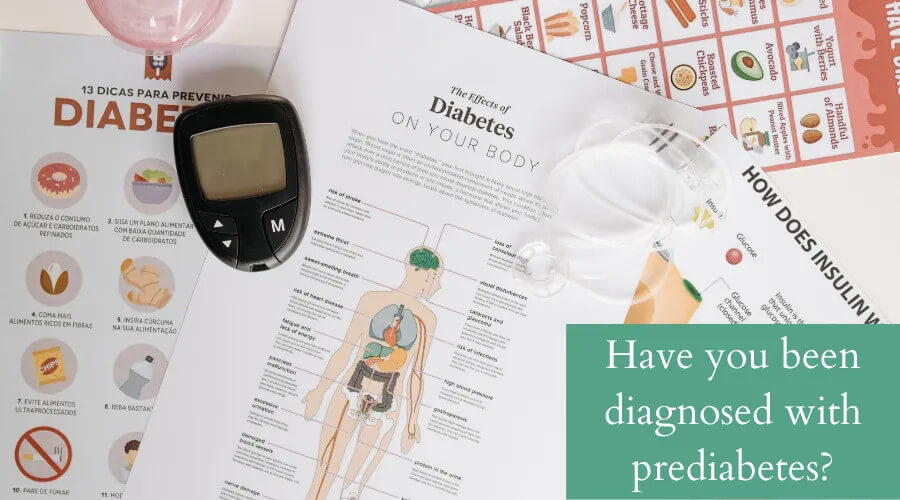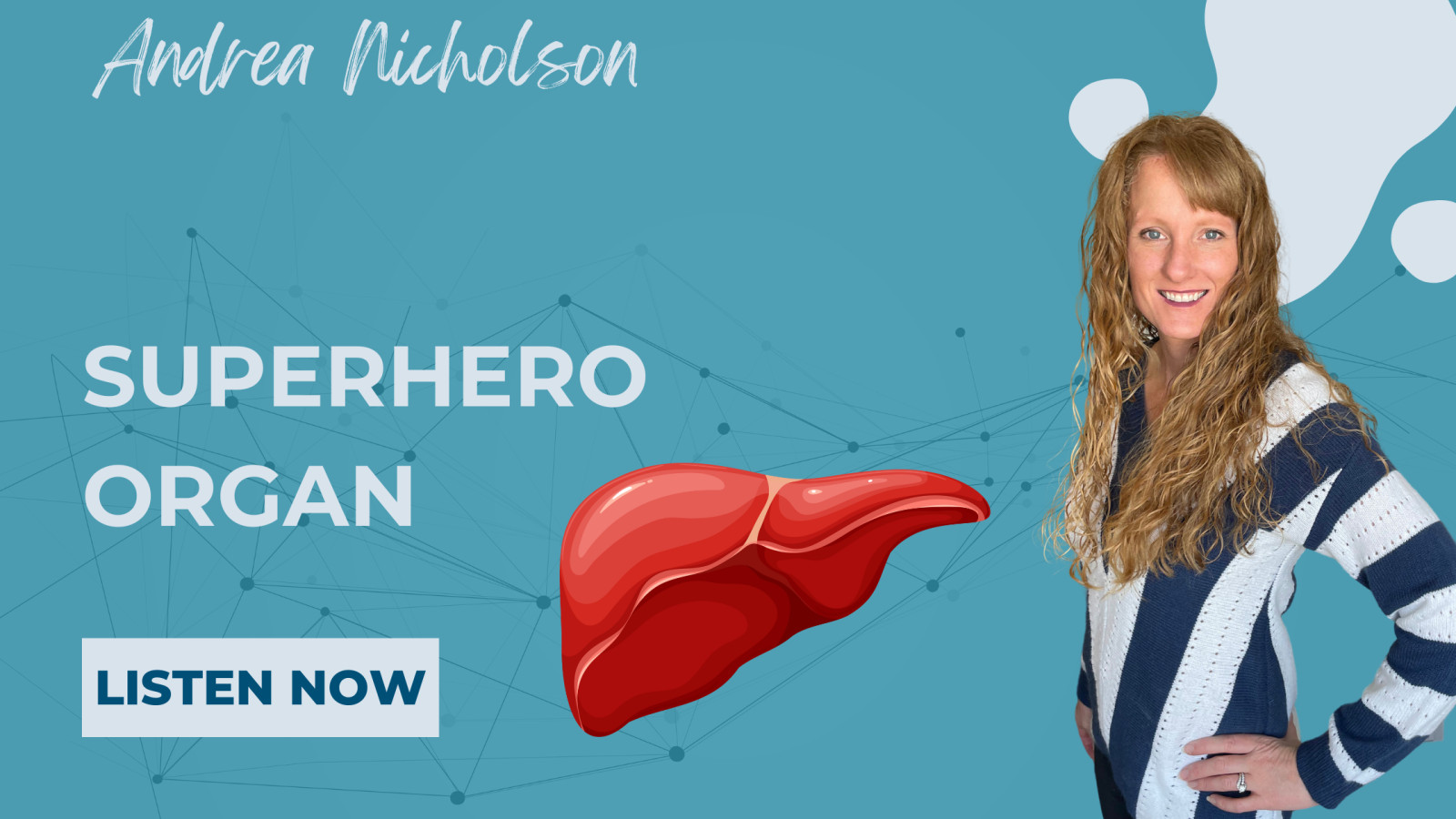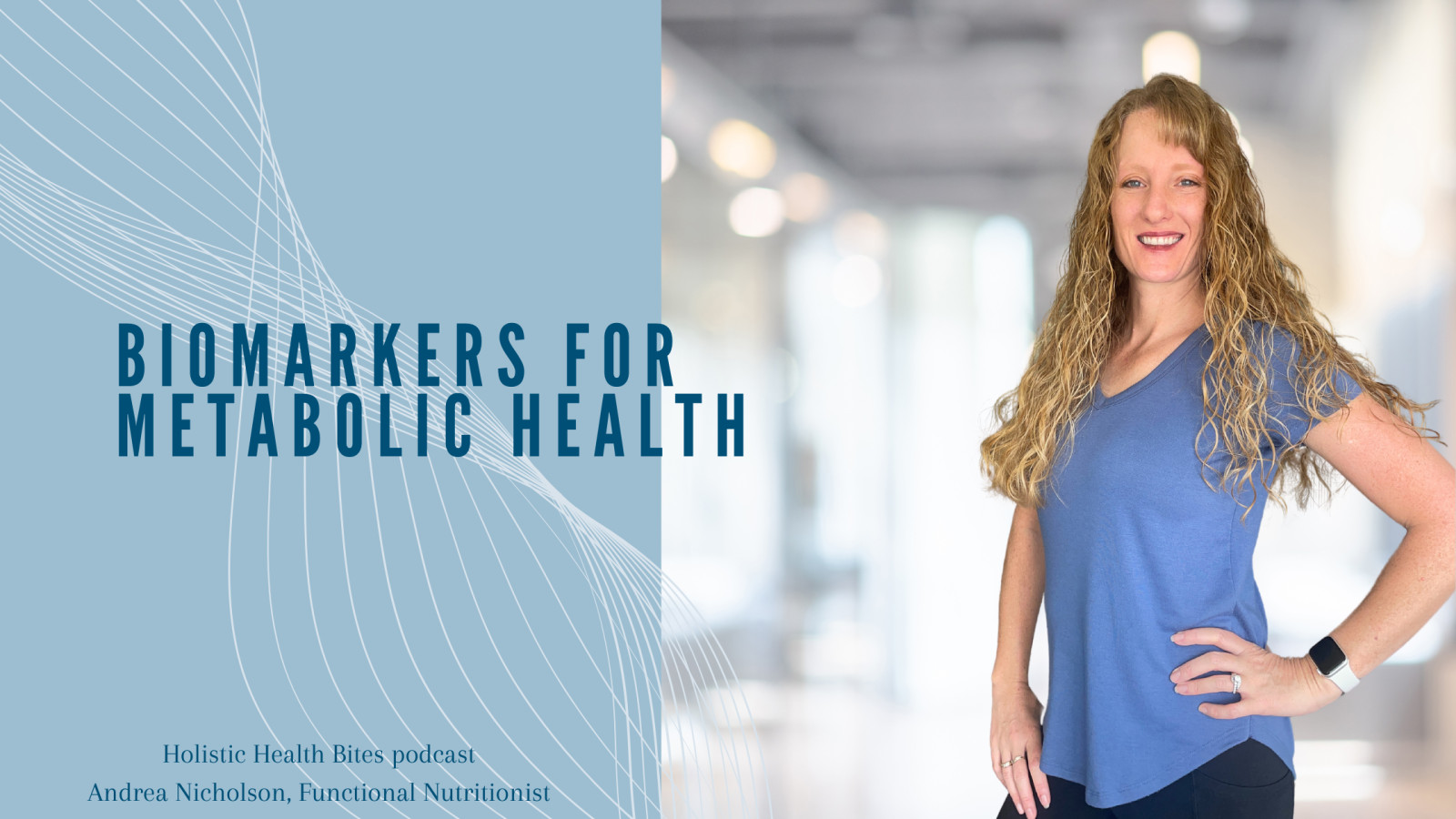
Prediabetes signs and causes
Prediabetes is a condition in which the body has become less sensitive to the effects of insulin (insulin resistance). This process occurs over many years or even decades before blood sugars start to rise.
Statistics in the United States show that over 50% of the adult population have diabetes or prediabetes. You may think this doesn’t apply to you if you’re not overweight – but nearly 1/3 of normal-weight adults fall into this category as well! In fact, research has shown that only 12% of the adult population have optimal levels of the top 5 markers for metabolic disorders – blood sugar, blood pressure, waist circumference, high-density lipoproteins (HDL cholesterol), and triglycerides.
Let’s back up a bit and talk about blood sugar, insulin, and the two main types of Diabetes.
Blood sugar and insulin
Blood sugar simply refers to the amount of sugar (glucose) in your blood mostly due to the foods you consume. Glucose is the primary source of energy for your body’s cells. The hormone insulin helps move glucose from your blood into your cells to be used for energy. Both blood sugar levels that are too high or too low can be toxic to the body. We’ll talk more later about what causes spikes and drops in blood sugar values.
Diabetes and prediabetes
Diabetes is a disease that is most known for its effects on blood sugar levels, though there are many other common symptoms and disorders associated. There are two main types of diabetes- type 1 and type 2.
Type 1 diabetes is an autoimmune disease in which the body does not produce insulin due to an attack on and destruction of the insulin-producing cells in the pancreas. Insulin is a hormone with many roles – one of which is to usher sugar from the blood into the cells of the body to be used for energy production.
Type 2 diabetes is the most common form of diabetes, and it occurs when the body does not use insulin properly (due to insulin resistance). Type 2 diabetes is first a condition of insulin being too high – and therefore toxic. Much like drug users need more and more of the drug to elicit the same high, the body can become less responsive to the presence of insulin meaning it takes more and more insulin to get sugar into the cells and out of the blood. Over time (often years), insulin continually fails to complete this task, continues to be produced in higher and higher amounts, and ultimately can’t get the sugar into the cells – leading to elevations in blood sugar.
Diagnoses of Diabetes
Type 2 Diabetes progression can take many years. The conventional medical community has standards for when they’ll diagnose a patient with pre-diabetes or diabetes based on various laboratory markers.
Hemoglobin A1c:
This is a blood test that determines the amount of sugar that has been added to your red blood cells. This is used to indicate your average blood sugars over the last 2-3 months (the average lifespan of your red blood cells).
- Below 5.7% is considered “normal”.
- 5.7%-6.4% is diagnosed as prediabetes.
- 6.5% or higher on two separate tests indicates diabetes.
Fasting blood sugar test:
This is a blood test usually taken in the morning following an overnight fast (no food or calories consumed for at least 8 hours).
- Less than 100 mg/dL (5.6 mmol/L) is “normal”. Optimal values would be 70-90.
- 100-125 mg/dL (5.6-6.9 mmol/L) is diagnosed as prediabetes.
- 126 mg/dL or higher on two separate tests is a diagnosis of diabetes.
Some doctors may also run other tests:
Random blood sugar
This test is a blood test that evaluates your blood sugars without regard to when you last ate. Values at 200 mg/dL (11.1 mmol/L) or higher suggests diabetes.
Oral glucose tolerance test
This test is more commonly used during pregnancy, but has grown in popularity with some medical professionals. In this test, you fast overnight, then drink a sugary solution at your doctor’s office. Blood sugar levels are then tested periodically over the next 2 hours.
- Values less than 140 mg/dL (7.8 mmol/L) are considered “normal”.
- 140-199 mg/dL (7.8-11.0 mmol/L) is diagnosed as prediabetes.
- 200mg/dL (11.1 mmol/L) or higher after 2 hours suggests diabetes.
Unfortunately, none of these tests are looking at insulin which is the first marker to increase in the progression of diabetes! A comprehensive panel is far more informative for overall metabolic health. Here are the markers that I recommend to more fully assess diabetes/prediabetes:
- Fasting glucose (see above)
- Full lipid panel: total cholesterol, HDL, LDL, triglycerides
- Fasting insulin (for early detection of insulin resistance)
- Uric acid (related to high levels of insulin)
- LDH (related to tissue damage)
- Complete Blood Count (CBC) with differential (related to blood cells and immune markers)
- Comprehensive Metabolic Panel (CMP) (for electrolytes, kidney markers, liver markers)
For full cardiovascular, inflammatory, immune system, and optimal metabolic health, I recommend additional testing on top of these markers. Many doctors won’t run these comprehensive panels. If that’s the case for you, I’m happy to run these panels for you!
Causes of Diabetes Progression
So, we’ve established that type 2 diabetes originates from high insulin levels. But what causes high insulin? Insulin is released primarily due to increases in blood sugar. Blood sugar increases the most with the consumption of carbohydrates, though it can also moderately rise with protein consumption. The least impact on blood sugar comes from dietary fats.
So if consuming dietary carbohydrates cause the largest blood sugar spike, and therefore the largest insulin rise – cutting back on carbohydrates would be the easiest and quickest solution to lowering both blood sugar and insulin!
Unfortunately, many of the medical community are still recommending 40-60% of the daily intake to be carbohydrates with an emphasis on low fat foods – even for those diagnosed with type 2 diabetes or prediabetes! But fat has the least capacity to raise blood sugars and insulin levels and carbohydrates have the most capacity to raise blood sugars! This is totally illogical and frankly dangerous advice!
Cutting carbohydrates is the fastest and most sustainable way to lower blood sugars and insulin levels. And it can happen quickly! Of course, this is a long-term strategy – if you go back to eating 40-60% carbohydrates, your blood sugars and insulin values will climb again.
The great news is research has shown that compliance with a lower carbohydrate diet can be very high over the long run, more so than very low-calorie diets or post-bariatric surgery diets.
Impact of stress
Stress can also cause blood sugar rises due to cortisol release. Cortisol, our primary stress hormone, causes the body to release stored sugars so that we have enough energy to deal with the immediate threat.
This rise in blood sugar ultimately leads to a rise in insulin because most of our threats today don’t actually require physical movement – we aren’t actually running from tigers! We’re sitting and stewing over emotional and psychological stressors or we’re dealing with biological stressors like toxins, poor diet, sedentary lifestyle, and chronic inflammation. These don’t require the same level of energy, but the body doesn’t know the difference between stresses that need a rush of glucose and stresses that we’re dwelling in. They all get added sugar!
Medications and traditional treatments
There are numerous medications available to the medical community to be prescribed for prediabetes and diabetes treatment. Unfortunately, the vast majority of these medications do not deal with the root cause of the disease (frequent consumption of blood sugar spiking foods causing frequent insulin elevations), but rather work to lower blood sugars artificially.
Some of these medications provide added insulin or make the body more sensitive to insulin. This sounds like a good thing – but insulin is an energy storage hormone – it causes weight gain (specifically fat)! These drugs have been found to dramatically increase cardiovascular disease risk among many other significant downsides! Artificially lowering blood sugar isn’t the solution – rather lowering insulin is! These drugs do not decrease insulin values – and insulin has the greater impact on health decline!
Some of these medications block the body from producing glucose from stored materials. These do not cause the weight gain or increased cardiovascular disease risks, but still do not deal with the root cause of the disease – consuming foods that spike blood sugars and therefore spike insulin! These medications again do not lower insulin levels.
Lastly, some medications block the kidneys from re-absorbing glucose back into the body. This does effectively lower blood sugar by allowing you to more effectively eliminate the sugar via urine. This still doesn’t directly correct the root cause (diet), but does not lead to weight gain or increased cardiovascular disease risk and may actually help with weight loss! These medications do not directly lower insulin levels, though insulin levels can drop by lowering the overall blood sugar levels.
Unfortunately, nearly all medications put you on a one-way street toward disease progression. None of them deal with the true root cause, but simply help remedy the disease symptoms and lower some of the immediate risks. Over time, these medications will become less effective and you’ll either need higher doses, different (stronger) medications, or multiple medications. Not only does this cost you your health and vitality, but these are often very expensive medications adding up to thousands of dollars yearly!
Why not switch directions and deal with the true root cause – the diet and lifestyle factors that are contributing to chronically elevated blood sugar levels that cause chronically elevated insulin levels?





















0 Comments